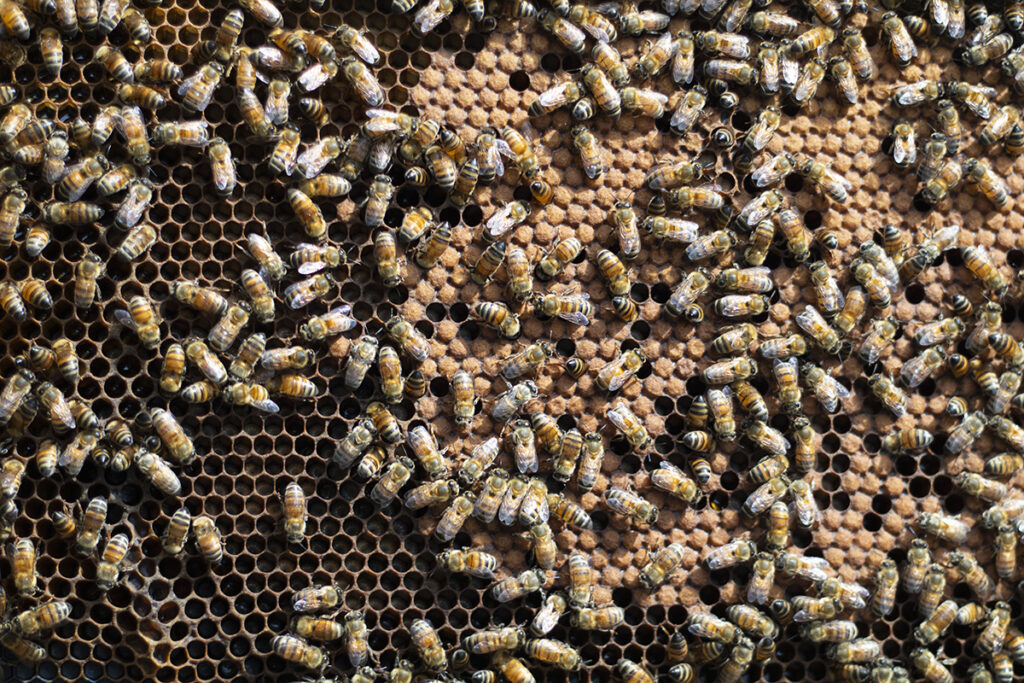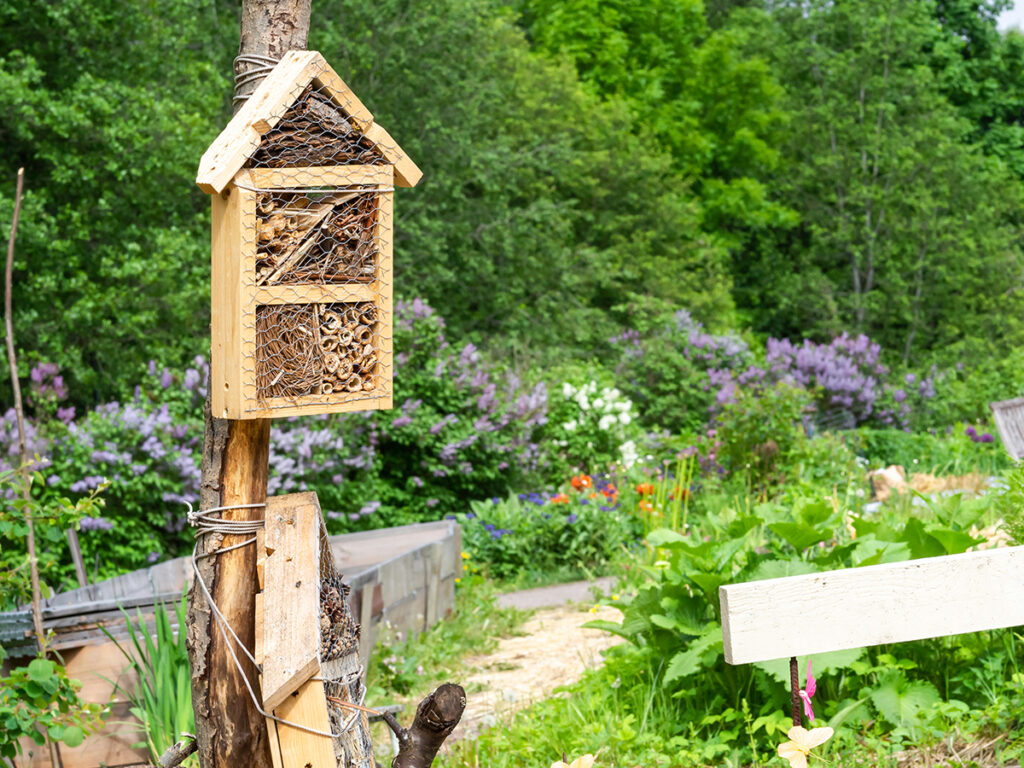
By Angelo Randaci, Earth’s Ally Horticulturist
Angelo’s passion for plants has led him to explore many areas of horticulture including research, grounds management, technical training, design and nursery management.
Three members of the Sarasota Green Group team recently visited the Heritage Bee Farm located in Myakka City, Florida, to learn about bees and their role in the ecosystem. It was stunning to get a closer view of their complex, well-organized society. It reminded me of how intricately entwined the world is and how for one species to survive all species must thrive. Honeybee survival is woven into our survival.
Bees are our most valuable pollinators and include two groups of insects:
- Honeybees, which are social bees, live in colonies and produce honey to feed their offspring.
- Solitary bees, on the other hand, are native and include the green sweat bee, leaf-cutter bee, and the orchard mason bee. Unlike honeybees, solitary bees live alone, forage for pollen and nectar, and do not produce honey.
Honeybees are not native to North America. They were initially imported from Europe in the 17th century.
Honeybees help pollinate many U.S. crops like fruits and nuts. In a single year, one honeybee colony can gather about 40 pounds of pollen and 265 pounds of nectar.
Honeybees increase our nation’s crop values each year by more than 15 billion dollars.
Honeybees are responsible for nearly a third of crop pollination. While wind does play a role in the pollination of certain crops such as corn and wheat, most of our nutritious foods are bee-pollinated. According to the American Beekeeping Federation, cherries and blueberries “are 90-percent [sic] dependent on honey bee pollination.”
Learn About Honeybees & Social Lives
Unlike solitary bees, honeybees exhibit what is often referred to as a “hive mind.” This means that they can collectively work together, not as an aggregate of individuals, but function as an integrated whole. Here are a few examples:

Temperature Control
The colony can collectively produce and control temperature. They accomplish this by operating in unison either by waving their wings to cool the hive during hot weather or by generating heat from body muscles during cold weather. Groups of honeybees will also ventilate the nest by fanning their wings near the hive entrance to prevent the build-up of heat.
Finding Adequate Housing
The collective method of deciding on where to make a hive involves the swarm of bees flying together with the queen while scout bees go off to locate potential places to start a colony. This occurs when the hive becomes overcrowded, and the hive must split in two with one group actively looking for a new site via scouts. The scouts look for a new location and return to the other bees and perform a dance. Each dance includes a code that indicates the site’s location. The bees then choose a location based on which scouts perform the most vigorous dance.
Learn About Solitary Bees
There are over 200 species of solitary bees. This includes mason bees, plasterer bees, digger bees, sweat bees, and carpenter bees. They vary in color from black to metallic green, blue, or red.
Of all bee species, over 90 percent are solitary. Females make their own nests in the ground, cracks or crevices in walls, hollow reeds, and wood.
Solitary bees don’t swarm, make honey, wax, or serve a queen. While some solitary bees nest in groups, the females build their own nests without any help or support.
Solitary bees are extremely efficient pollinators. The U.S. Department of Agriculture researchers state that only 250-300 female blue orchard bees can pollinate one acre of apples, whereas it would take approximately 15,000 to 20,000 honeybees to pollinate the same area.
Most solitary bees collect pollen from a wide variety of plant species. A few specialize in collecting pollen from only one genus or species.
Solitary bees are less defensive than bees that live in groups (or “social bees”). Although the females are capable of stinging, they rarely do unless threatened. Some solitary bees are so tiny that their stingers are too small to penetrate human skin.
Unless you are allergic to bee stings, you should not be concerned if you find a few solitary bees nesting in your yard.
Things We Can Do to Help Pollinators
Create a pollinator habitat for pollinators by growing bee-friendly plants. Obtain a list of the best plants from your local county extension agency that grow in your area. Flowering trees and shrubs provide nectar from hundreds of blossoms for them to feed on. Trees also provide essential habitats. Leaves and resin supply nesting material while bees also find shelter in wood cavities. If you have limited space, plant containers, or window boxes with your favorite bee-loving plants. Add pollinator plants to your vegetable garden. You will get better yields from increased pollination.

Because solitary bees are hole-nesting bees, they can utilize any space with a shallow tunnel or crevasse. You can build your own solitary bee house with just a few biodegradable materials. Some examples are bamboo stalks, cardboard rolls, or wood blocks with tubular holes drilled inside. Be houses are also available for purchase.
Avoid using synthetic pesticides. Organic pesticides that degrade rapidly will help reduce pollinator mortality while maintaining a safe environment for you, your pets, and your family. Earth’s Ally products are formulated with ingredients that you can find at home in your kitchen. They are Bee Safe® and will control unwanted insect and weed pests.
We’d love to hear how Earth’s Ally is helping you grow healthy pollinator gardens. Share your experience with our bee safe formulas and stay connected with the #EarthsAlly community on Facebook, Instagram and Twitter for access to our latest blog posts, giveaways and exclusive promotions.
